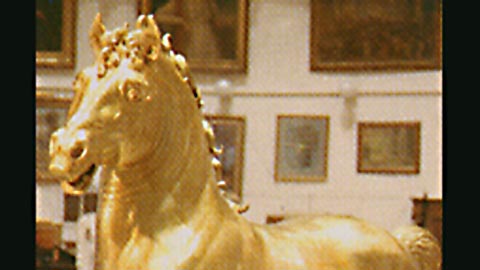In an elaborate studio setting in the hills of Pennsylvania, history is in the making – again.
Charles C. Dent is creating a horse based on Leonardo's Drawings. The twenty-four foot bronze statue will be presented as a gift from the American people to the people of Italy. Offered to honour the Renaissance master, the people of Italy and the noble horse, it serves as an expression of international peace and goodwill.
As chronicled in National Geographic Magazine, this project is rich in history, international in scope and, as one Leonardo scholar put it, "immensely exciting."
Which rubber compound was used to make the mold of the eight-foot working clay model? Why Smooth-On, of course.
Background
Milan, Italy, Late 15th Century
Lodovico Sforza (Duke of Milan), to honour his father Francesco, commissioned a bronze equestrian statue that would stand eight meters (twenty-four-feet) high for his courtyard.
The young Renaissance master, Leonardo da Vinci, accepted the assignment from his patron and prepared for the task by studying equine anatomy, drawing sketches and finally sculpting a working clay model of the horse.
Then came war. In 1499, France invaded Italy and took control of the city of Milan, imprisoning the Duke. The bronze set aside for casting the immense statue was instead used by the Italians to make cannons in defense of their city.
Using Leonardo's clay model for target practice, French troops destroyed it with bow and arrow.
A loss to all humanity, the masterpiece was finished. Until...
Present Day
Fogelsville, PA – U.S.A. Late 20th Century
Retired airline pilot, art collector and sculptor, Charles C. Dent read an article in National Geographic Magazine (September 1977) about Leonardo's unfinished horse and decided to create it "in the master’s style."
Researching the project meant consulting Renaissance and equine scholars from all over the world, as well as reproductions of Leonardo's original sketches of The Horse. These were available through England's Windsor Castle and Spain's National Library.
Dent, with the aid of several artists, sculpted the eight-foot working clay model. After locking in the final lines, the model is finished; the product of over six years of effort.
The next step on this journey into history is for foundry artisans to construct a twenty-four foot clay model. Foundry engineers will erect the massive stainless steel armature that will allow the final bronze colossal to stand on two legs.
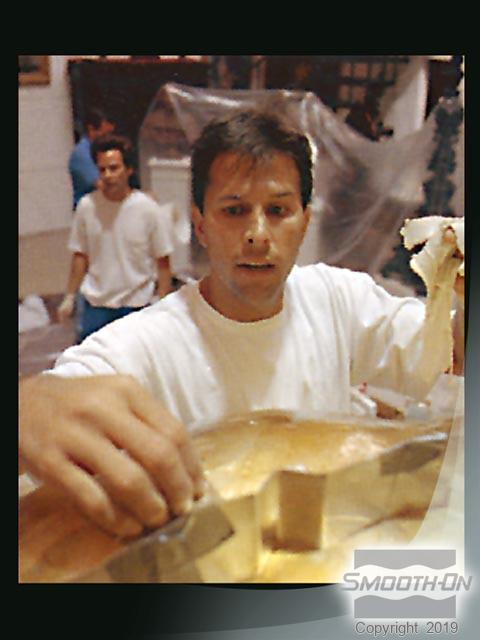 Artisans from the Clifton Sheely Co. (Lancaster, Pa.) embark on a 3-day mold making adventure. They prepare the gilded horse model by first fitting parting shims.
Artisans from the Clifton Sheely Co. (Lancaster, Pa.) embark on a 3-day mold making adventure. They prepare the gilded horse model by first fitting parting shims.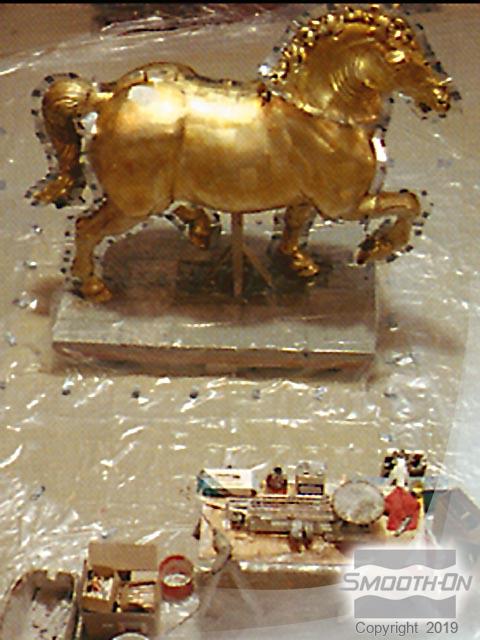 Next, the model is sealed with shellac and a release agent is applied. The Smooth-On rubber compound is measured and mixed.
Next, the model is sealed with shellac and a release agent is applied. The Smooth-On rubber compound is measured and mixed.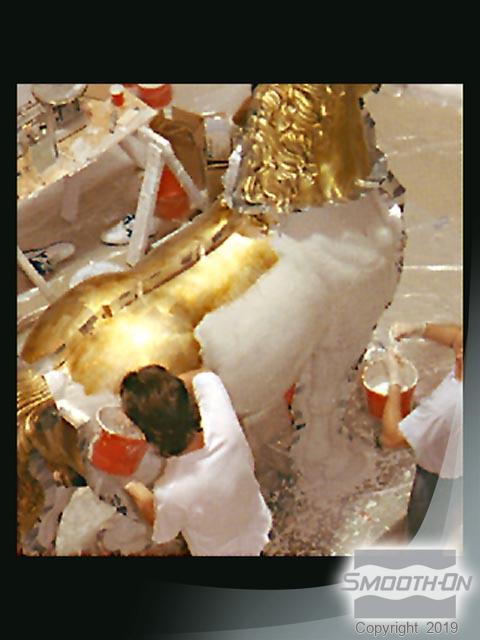 The Smooth-On rubber compound is measured and mixed. It is made paintable by adding a thickening agent and applied. For a project of this magnitude, precision is critical.
The Smooth-On rubber compound is measured and mixed. It is made paintable by adding a thickening agent and applied. For a project of this magnitude, precision is critical.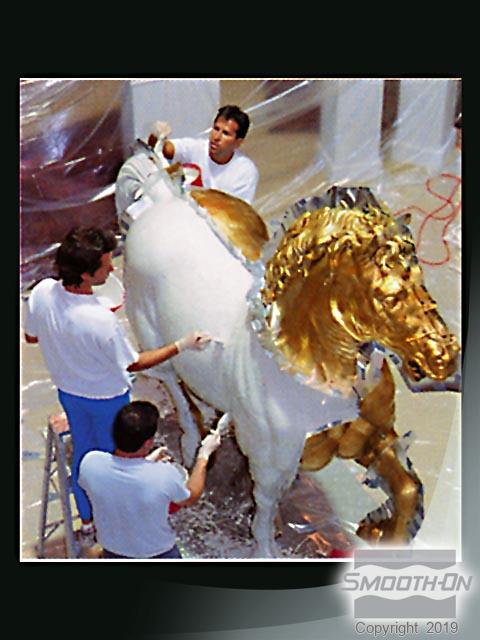 Having the ability to control exact thixotropy is just one reason why more professional moldmakers throughout the world choose Smooth-On quality products.
Having the ability to control exact thixotropy is just one reason why more professional moldmakers throughout the world choose Smooth-On quality products.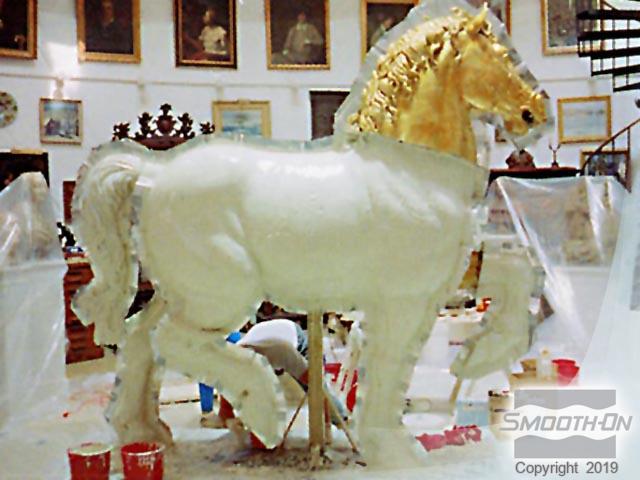 The rubber is applied in five layers to give the mold strength and handling ability. If you have questions about the mold making process, call toll-free 800-762-0744.
The rubber is applied in five layers to give the mold strength and handling ability. If you have questions about the mold making process, call toll-free 800-762-0744.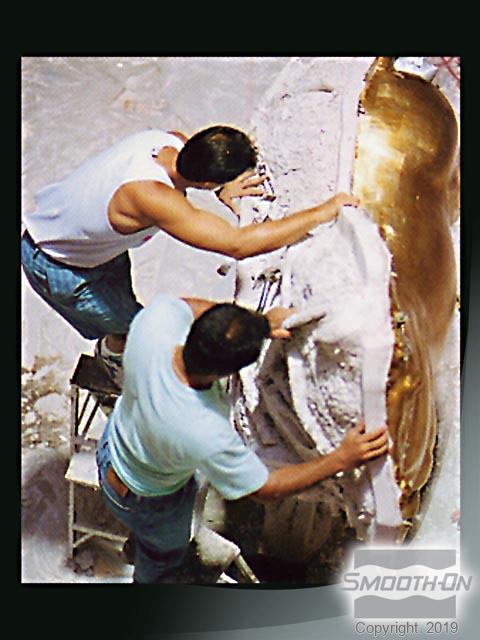 With the rubber mold fully cured, it is covered with multiple layers of plaster for support. After the plaster support mold dries it is removed in sections defined by the shims fitted earlier.
With the rubber mold fully cured, it is covered with multiple layers of plaster for support. After the plaster support mold dries it is removed in sections defined by the shims fitted earlier.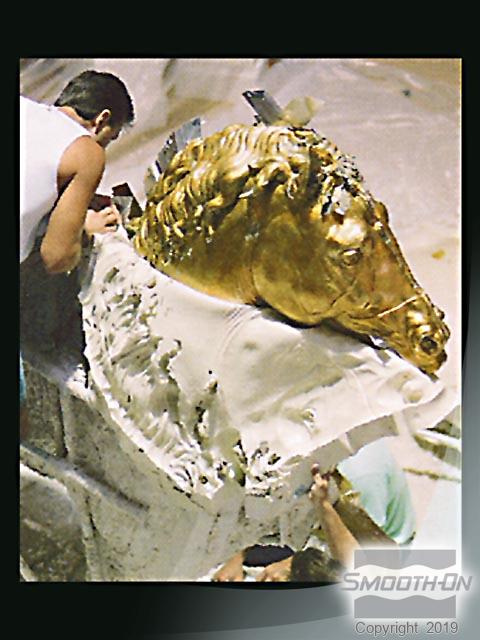 The rubber mold is easily removed from the model, revealing all of the captured intricate detail.
The rubber mold is easily removed from the model, revealing all of the captured intricate detail.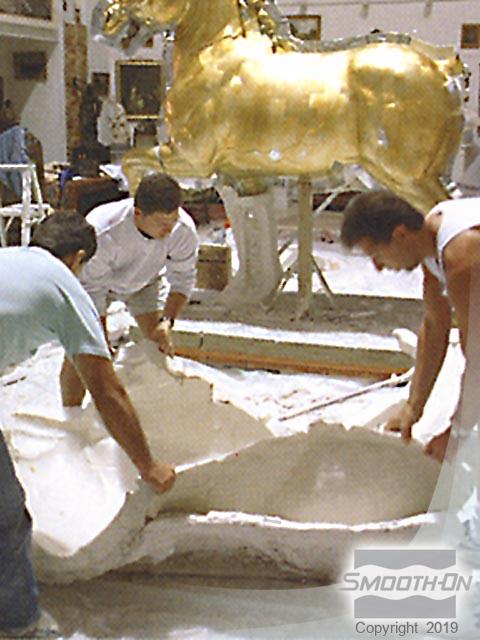 A large section of this multi-piece mold is placed in the plaster support, which is a perfect fit.
A large section of this multi-piece mold is placed in the plaster support, which is a perfect fit.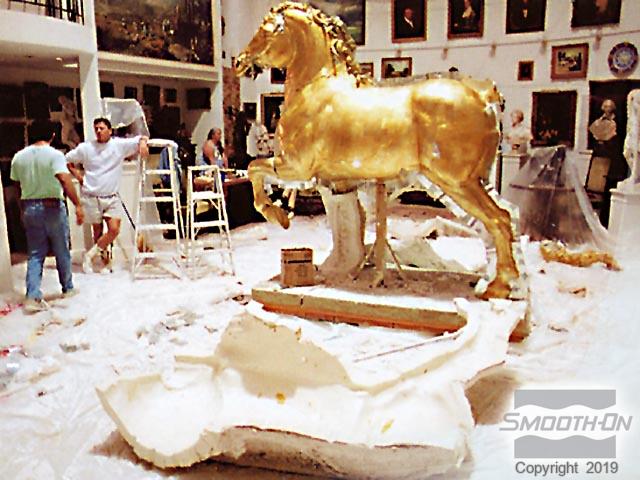 A well deserved pause from the days labours.
A well deserved pause from the days labours.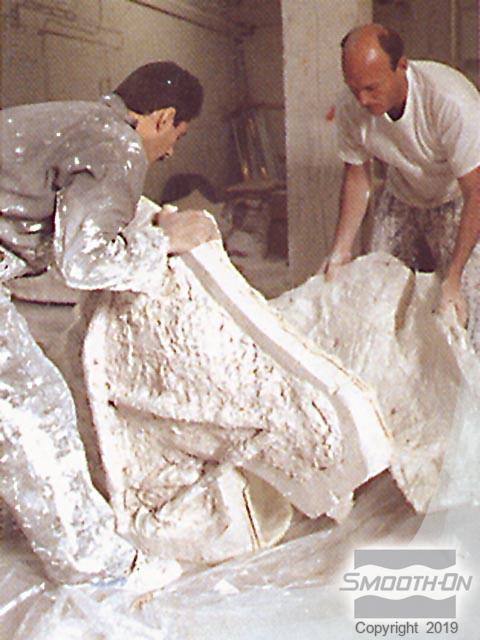 Demolding a plaster cast of the head section, the two piece plaster case mold is separated.
Demolding a plaster cast of the head section, the two piece plaster case mold is separated.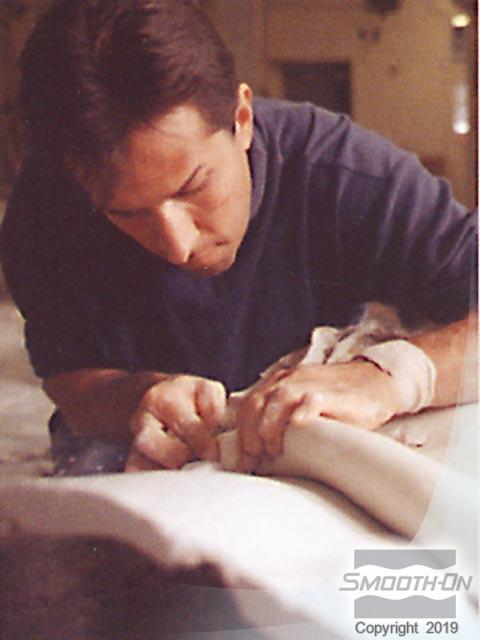 The rubber mold is separated from the plaster cast.
The rubber mold is separated from the plaster cast.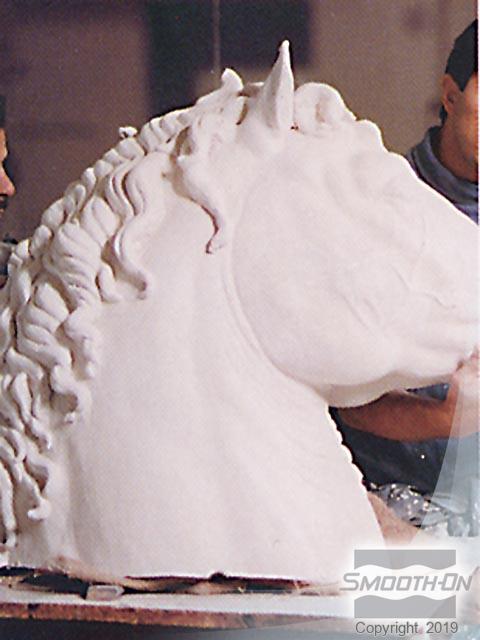 An Exact Reproduction by Mr. Sheeley
An Exact Reproduction by Mr. Sheeley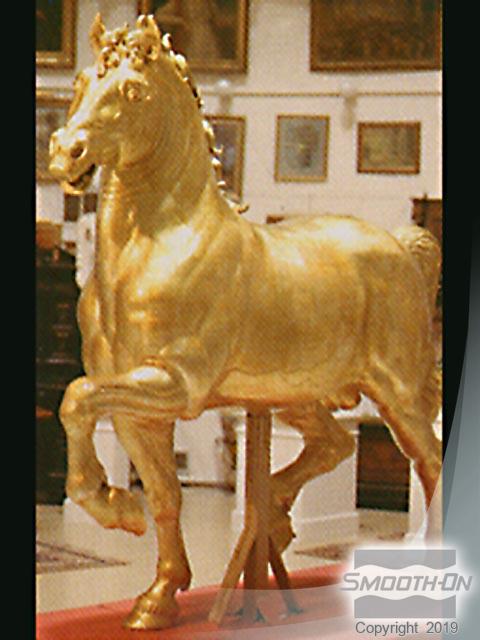 Dramatic lighting highlights all of the detail captured by the Smooth-On rubber mold compound.
Dramatic lighting highlights all of the detail captured by the Smooth-On rubber mold compound.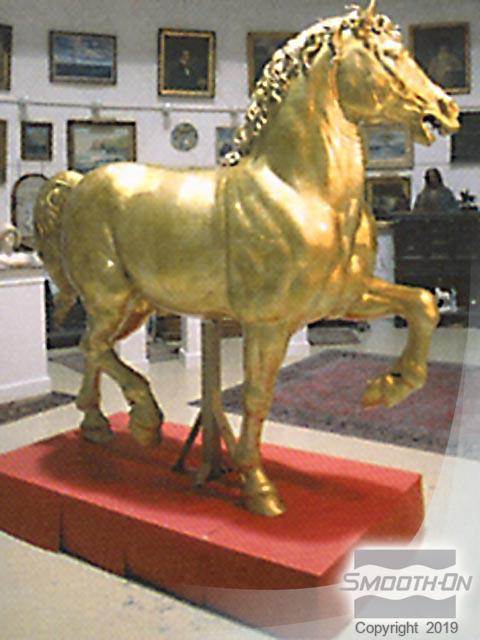 Dramatic lighting highlights all of the detail captured by the Smooth-On rubber mold compound.
Dramatic lighting highlights all of the detail captured by the Smooth-On rubber mold compound.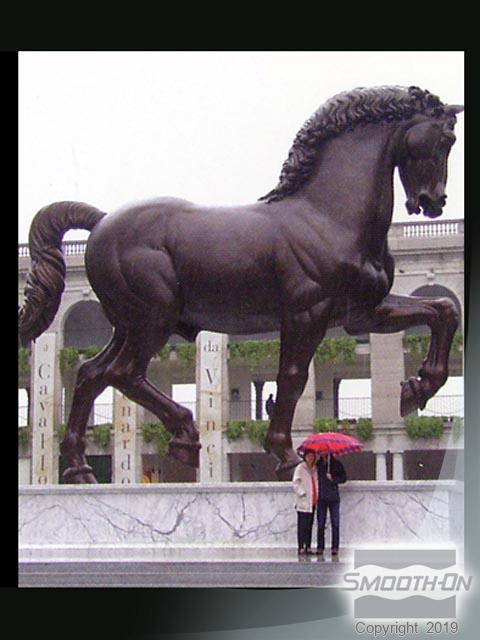 The final bronze arrived in Milan, Italy, in the fall of 1999 and resides at the Milan Equestrian Center--500 years after Leonardo first presented his model to the Duke.
The final bronze arrived in Milan, Italy, in the fall of 1999 and resides at the Milan Equestrian Center--500 years after Leonardo first presented his model to the Duke.
